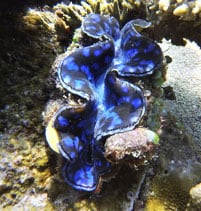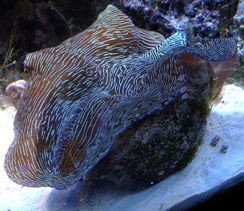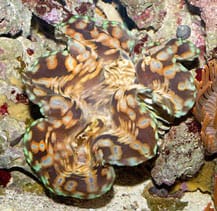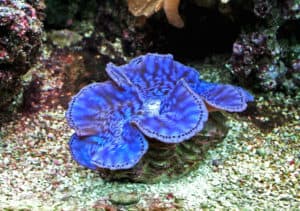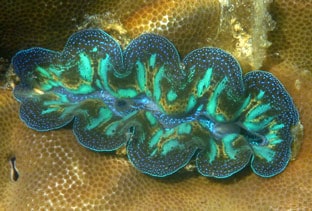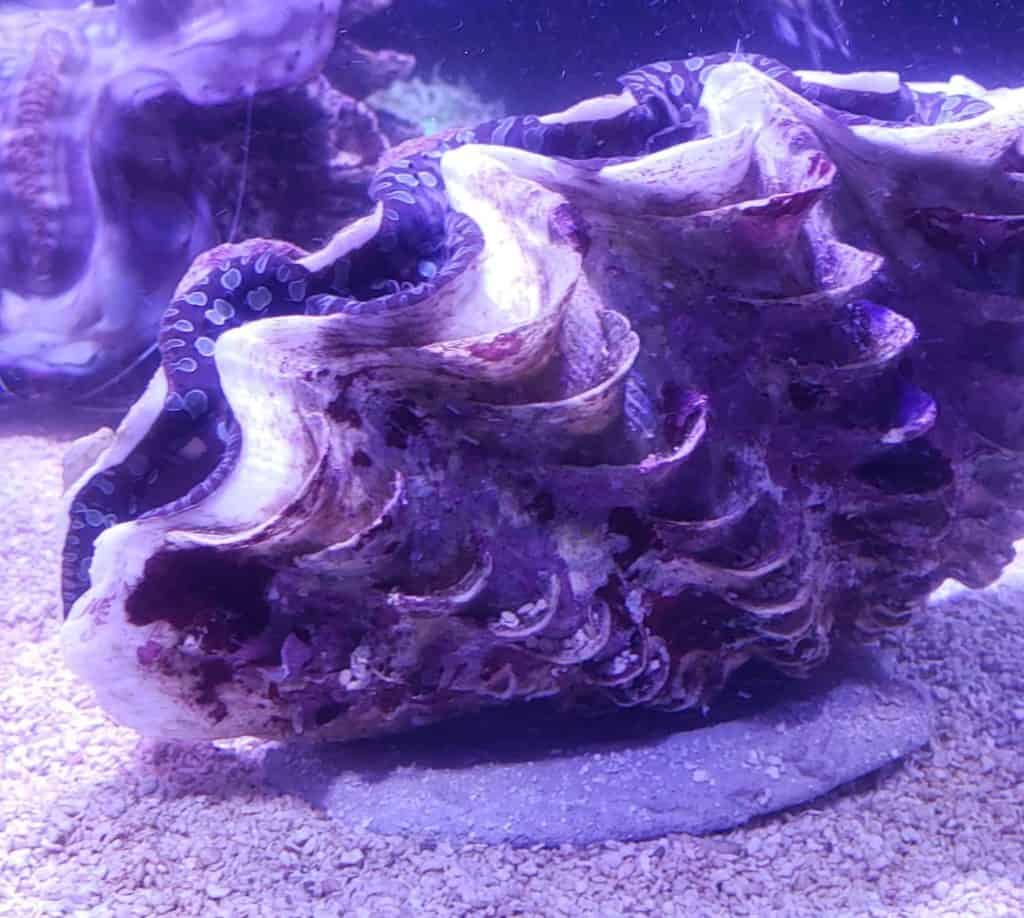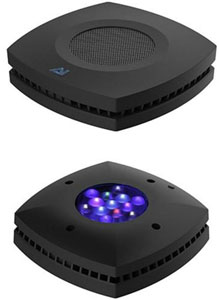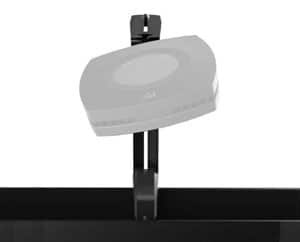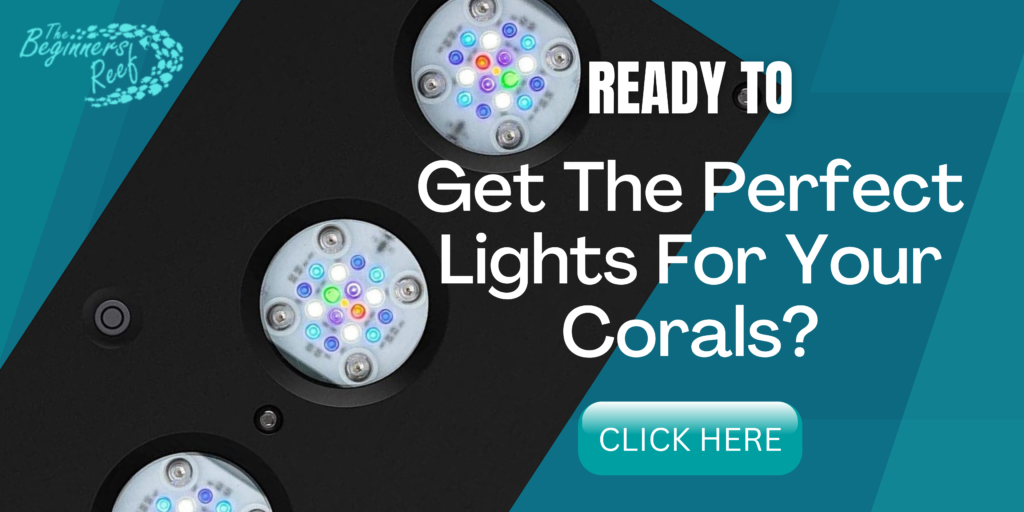Clams are one of those things I wanted in my reef tank since the first day I ever say them! Way back in the 90’s I tried to keep one and as you can guess, it died! Why?
Using power compacts and an unmatured tank sealed its fate but at the time I knew no different! Today though the information and technology available make keeping these beautiful specimens a lot easier!
Tridacna Squamosa and Tridacna Derasa are the best clams for beginners. Requiring lower light & water quality conditions to thrive they are perfect for a first clam. A 3″ Derasa clam will start at around $40 and can double or triple its size over the first year, growing to a maximum of 20″ in length.
The 5 most popular Saltwater Aquarium Clams are in the Tridacna family:
- Tridacna Squamosa
- Tridacna Derasa
- Tridacna Gigas
- Tridacna Maxima
- Tridacna Crocea
Let’s find out which of these are the easiest to start with and why…
Are Saltwater Clams Easy To Keep?
Like everything in this hobby, once your water parameters are in the correct ranges and stable, your water is full of food and your maintenance regime is regular there is no reason why your first clam will not be a success.
The Tridacna family of Giant Clams are a beautiful addition to any reef tank. Their unique shapes, patterns, colors, and movement can make a great center-piece for any aquarium. They do in mine!
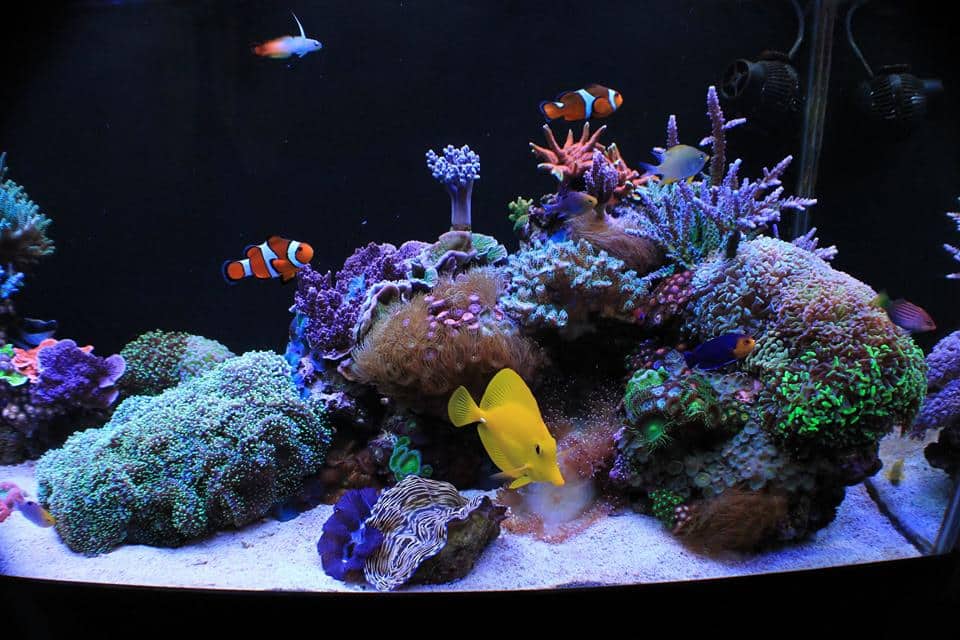
Tridacna clams will require your water to be stable and if you are already dosing for corals, then keeping clams will be no issue. Just be sure to monitor your Alkalinity & Calcium especially when the clams get growing. They can suck it up at a rapid rate!
For a Tridacna Clam you will want your water in the following parameters:
| Parameter | Range |
| Temperature | 78 – 80°F or 25 – 27°C |
| Salinity (Specific Gravity) | 1.023 – 1.025 sg |
| Ph | 8.1 – 8.4 ph |
| Calcium | 380 – 450 ppm |
| Alkalinity | 8 – 11 dkh |
| Magnesium | 1280-1350 ppm |
| Nitrate | <2 mg/L |
In addition to the above parameters having trace elements of:
Strontium – Absorbed by the shell, will help with growth
Iodine – Absorbed by the tissue, will help with deeper colors & growth
Nitrate – A very small amount of Nitrate will help with growth
Once these parameters are met and stable you are well on your way to providing a great home for a clam. Flow and Lighting are your next requirements to fulfill. More on these later!
What Are The Best Types of Saltwater Clams For An Aquarium?
There are 5 main species of clam in our hobby. They are all part of the Tridacna family which is a family that is perfectly suited for life in the home aquarium.
The clams listed below range from easiest to keep through to the more expensive and less tolerant Crocea’s.
Squamosa Clams
Latin Name: Tridacna squamosa
Max Size: 24″ in Wild
Approx Cost: From $50.00
Light Level: High
Placement: Sand
Care Level: Beginner
Derasa Clams
Latin Name: Tridacna derasa
Max Size: 24″ in Wild
Approx Cost: From $40.00
Light Level: High
Placement: Sand
Care Level: Beginner
Gigas Clams
Latin Name: Tridacna gigas
Max Size: 48″ in Wild
Approx Cost: From $200.00
Light Level: High
Placement: Sand
Care Level: Intermediate
Maxima Clams
Latin Name: Tridacna maxima
Max Size: 12″ in Wild
Approx Cost: From $40.00
Light Level: High
Placement: Rock
Care Level: Moderate
Crocea Clams
Latin Name: Tridacna crocea
Max Size: 6″ in Wild
Approx Cost: From $75.00
Light Level: High
Placement: Rock
Care Level: Expert
Anatomy Of A Clam
Clams are a pretty simple organism for what we need to know, but these are some of the major parts that you will hear throughout this guide.
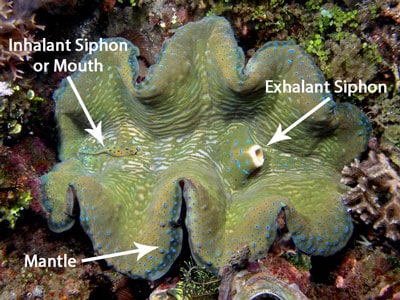
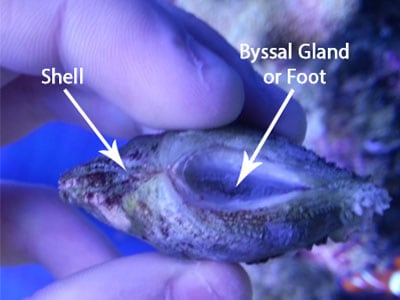
Which Saltwater Clam Should You Get First?
The first clam most saltwater aquarists begin with is either a Tridacna Squamosa, Tridacna Derasa, or Tridacna Giga depending on what is available. All these clams can tolerate lower intensity lighting and water quality with a relatively cheap purchase price making them ideal first clams.
When your aquarium is stable and mature enough then you will be ready to try your first clam. When I say mature enough I usually recommend when you have been keeping corals for a while and you have begun supplemental dosing for Alkalinity, Calcium, and Magnesium.
The reason for this is that clams can grow fast when they are happy and they can soon consume these trace elements from the water you change during your water changes. Once the demand outweighs the supply during water changes, it is time to begin supplementing to ensure the demand is met.
Supplemental dosing is not hard but it does take a few months to get you dialed in to what is going on and for your dosing regime to match the demand. Once you have this dialed in, then you are ready for your first clam.
For your first clam I would recommend any of the following:
- Tridacna Squamosa
- Tridacna Derasa
- Tridacna Giga
These are the three easiest clams to begin with. They are the most widely available, have the cheaper price tag, are sand-dwellers, they are easier to acclimate, are hardy enough to accept a tiny bit of water parameter instability and they can come in beautiful coloration.
How Fast Do Saltwater Clams Grow?
When happy clams can double or triple their size in the first 1-2 years. Ensure a newly purchased clam has enough space around it to grow. If they place their foot to the aquairum glass bottom they can be very hard to relocate in the future. Derasa clams can grow up to around 20″.
Because of this it is a good idea to implement the following from day one to allow you some options in the future:
When you first buy your clam see if you can find a flat piece of dry rock or even a Clam Holder starting around $2.00 at AquariumSpecialty.com. Clams have a gland on their base that they use to secure themselves to their environment. By having the clam attach to a flat rock or a Clam holder you can bury this under the substrate but it allows you to move the clam around your aquarium.
If you do not use one of the above methods your clam could attach itself to the bottom glass making it very difficult to remove them clam, especially when it becomes too big for your tank!
What Are The Light & Flow Requirements For Saltwater Clams?
Saltwater Tridacna Clams require either high-intensity LED, T5HO or Metal halide lighting to provide sufficient light energy to their mantle and require enough flow to ensure there is no deadspots of water around them, but not too much flow that their mantles begin to tear.
Light and flow play an even more important role in your clam’s life than water parameters. Your clam has the same Zooaxanthellae algae in its tissue as corals, meaning that it photosynthesizes using light to produce energy. Without the correct lighting, the clam will eventually starve. This is usually the biggest downfall of a first clam.
Although not as necessary as light, flow is required to bring particulate food to your clam. Because it is a stationary organism it relies on water to bring it food, in addition to the light. Clams are filter feeders and they take in water through their Inhalant Siphon, pass it through its gills and then expel the water after removing the food through its Exhalant Siphon.
BE CAREFUL! Clams can shoot water at you when you are placing them into the water! I got a face full! My 4-Year-Old daughter thought it was the funniest thing ever!!
Clam Lighting Requirements
If you have corals and are dosing then im pretty sure you will have sufficient lighting for your first clam. If you are reading this in preparation for your first clam then you are going to need a good-quality, High-PAR light.
Although not as popular now since the mass addition of LED lights to the hobby, Compact Fluorescent lights will not cut it I’m afraid. Even some of the cheap LED lights will not have the PAR requirements to supply enough light energy to keep your clam fed.
Here are some typical PAR requirments for keeping clams:
| Clam Type | Absolute Minimum PAR |
|---|---|
| Tridacna Deresa | 100-150 |
| Tridacna Squamosa | 150 |
| Tridacna Giga | 150 |
| Tridacna Crocea | +250 |
There are the only 3 type of lighting fixtures I recommend you have to even attempt your first clam:
Metal Halide – T5 HO – High Par LED
They can be expensive but if you wish to keep corals and a clam it is the one place you cannot cut corners on. If you have a smaller aquarium or you are on a budget, the AI Prime HD is a great LED light for $200. This will provide enough PAR for your first clam providing it is mounted as per its recommendations.
You can find out more about the Aqua Illumintaion Prime LED light Here at Amazon.com
For a really great in-depth look at many of the awesome LED lights available today I recommend you check out my article:
As you progress in your hobby you will begin to understand, if you don’t already, that lighting is one of the areas that will make or break a successful coral reef aquarium.
The Tridacna Maxima and Crocea clams require the highest intensity light source and they even require being placed up on the rock to mimic their natural shallow water lagoon habitat. Their coloration, price tag, high tolerance for water stability and first-class lighting requirement make them recommended only for the seasoned, well-experienced hobbyist.
I would not advise purchasing a $200-$400 clam if you only have a $100-$300 lighting system!
A Good Rule-of-Thumb:
The more colorful the mantle, the more light that clam needs!
Clam Flow Requirements
As I mentioned earlier, it is the flow which can bring supplemental food to your clam, The other main role of flow to is help remove waste away from your clam.
Getting the flow correct also plays an important role in the health of your clam. Too much flow and you could rip the fleshy mantle away from the shell, too little flow and your clam can be undernourished in its early years and be sitting in its own waste.
We all know one of the keys to success in a reef aquarium is good, random flow. Your clams requirements fit this bill. You have to exercise some caution with this when you are looking to place Maxima and Crocea clams because the flow is usually stronger the higher up the rock you go.
Most clams require a moderate, indirect flow of water. You want to see their Mantle gently waving, but not being blasted. If you find your clam is not opening, you could have too much flow on it.
For more guidance on what type of pump/s you will require for a clam please check out this article:
Types of Aquarium Pump – What To Use & Where
What To Look For When Buying Your First Saltwater Clam?
- Check the reaction of the clam – When you wave your hand over the surface of the water and place the clam into shadow it should naturally recede its Mantle into the shell and close. A slow reaction could be because it is still acclimating to its new home in the store and will improve as it regains its strength – Ask if the clams have just arrived.
- Look for gaping – A gaping clam will look fully open, it’s Inhalant Siphon stretched wide and the Mantle will be poorly extended. This could be another symptom of recent transportation and you should pass.
If the Mantle is pulling inwards or there is tearing between the siphons while being fully open, the clam could be under insufficient lighting. The clam will stay like this until the lighting is sufficient - Examine the Mantle – Mantles should be colorful everywhere with no white spots or patches. Inspect for rips and tears from possible predators. Patchy Mantles are a result of poor lighting.
Tridacna Gigas can sometimes have a clearer patch around the center of their Mantle, this is normal - Mantle Overhang – Most Tridacna clams will exhibit an overhanging Mantle when it is happy and healthy. The Mantle should retract easily into the shell when placed into shadow
- Check the Byssal Gland – If able, have the store owner gently pick up the clam to check its foot. If the store is reputable they should have the clams on larger particulate substrate or on Clam Holders. Inspect the foot for tearing or loose tissue hanging off the bottom. This could indicate it was torn from its mounting and will probably die within a few weeks
How Do You Acclimate A Saltwater Clam?
If you can, I strongly recommend you quarantine (QT) your clam, just like any other addition to your aquarium! The acclimation process is the same no matter if you are moving the clam from Store to Quarantine Tank, Store to Display Tank, or Quarantine Tank to Display Tank…
Clam QT – Always try and QT a clam for 10 days. This will allow any hitchhikers hiding inside a chance to be spotted and removed. A clam in QT will require a light like the AI Prime HD, a small powerhead to give indirect flow and either a Clam Holder or a small bowl filled with substrate for the clam to take hold on.
If you want more information on how to easily setup a QT tank in 5 minutes please read this:
Fish Quarantine. How To Be Ready In Minutes
STEP 1 – Turn Down Lights
Turn down the lights in the area of unboxing as clams are sensitive to changes in light – Remember the shadowing!
STEP 2 – Float The Bag
Float the bag containing the clam in the tank for 10-20 minutes to equalize the temperature.
STEP 3 – Transfer To Container
Pour the water from the bag into a smaller container and place the clam into the container. Try and keep the clam submerged at all times if possible.
STEP 4 – Start The Drip
Place the smaller container below the level of the aquarium water level, take a piece of airline tubing and start a siphon from the aquarium. Tie a knot in the end of the tubing to set the drip-rate. About 1-2 drips per second works good. Let the hose drip into the container hosing the clam.
STEP 5 – Dispose
Allow the container to fill, then dispose of 50% of the water and keep the drip going. Do this for approx 30-45 minutes.
STEP 6 – Inspect For Pests
Once the acclimation has been completed, take a soft toothbrush and brush all the shell to remove any pests or hitchhikers. Take a magnifying glass and look around where the Mantle joins the shell and the around the foot for any pests. See the Pests section later for identification. Remove any pests or hitchhikers if found.
If you can, try and inspect inside the mouth – This is where QT comes in handy.
STEP 7 – Wash Off Debris
Transfer the clam to a container holding clean aquarium water to wash off any pests/debris. Give the clam a gentle swooshing while holding to help clean it.
STEP 8 – Burp The Clam
Using your hands remove the clam from the acclimation container and let any water drain from it. Place the clam into the QT tank or aquarium and ‘Burp’ the clam to remove any trapped air. Do this by slowly rotating the clam in all directions while underwater.
Watch out for it squirting you when you remove it from the water!
If you have a clam holder, place it on the sand and place then clam into it. Try and locate the clam in a darker area with lower flow for the first day or 2 to allow it to acclimate. As it opens be sure to check for hitchhikers inside it! Remove at once if you see any!
STEP 9 – Move To Final Location
Within a few days, the clam should have secured its foot to the clam holder. Now you can move the clam to its final location if it different from where it is now.
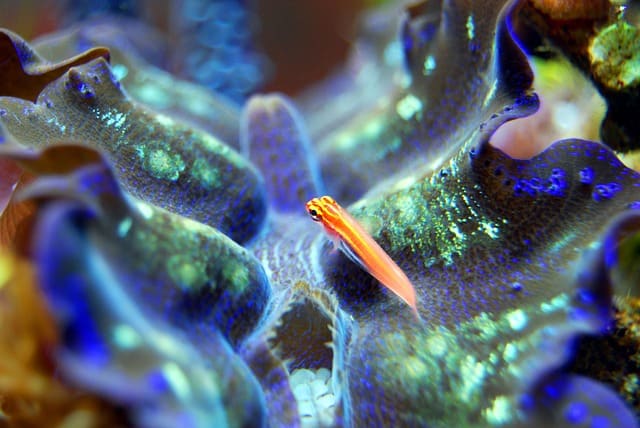
Never forcibly remove a clam if its foot is attached to the rock or substrate or glass. As a last resort, you can use a knife to cut the Byssal strands as far away from the clam as you can. Then move it to its new location. The clam holders help prevent this.
STEP 10 – Protect From Bleaching
When you have a clam like a Maxima or Crocea they will require mounting on the rock. Once you have acclimated them to the lights on the sand bed it is a good idea to slowly move them up the rock work in stages until they are in the final location. This will ensure you do not bleach the Mantle.
If this is not an option you may be able to turn down the light unit above the clam and then slowly ramp up the light intensity over the following week.
If you are unable to alter light intensity you could place a screen across the area of the clam and slowly remove the screen a bit each day to allow the clam to slowly acclimatize to the light. Plastic rods or long kebab skewers with paper placed across the aquarium rim edges works well.
Where Do You Place Saltwater Clams In An Aquarium?
Tridacna Squamosa and Deresa clams require the least amount of light enerby and can be placed on the sandbed. Tridacna Crocea clams require the highest light energy and should be mounted high up on any rockwork to simulate their natural lagoon habitat.
Whether your new clam is going to be sitting on the sand bed or up on a rock there are several things to know to ensure the clam will be happy in its location:
- Ensure the clams’ Mantle is as flat to the light source as it can be. The flatter it is, the more light it absorbs, the healthier it will be
- If your clam has to be on a slight incline, so you can see its colorful Mantle, place the clam with its Inhalant Siphon or Mouth lower than its Exhalant Siphon
- Never place your clam tight between two rocks where it might not be able to fully open
- In the first few days, your clam may fall over until it has secured its foot. Use objects like rock rubble to temporarily prop it up, but be sure it can fully open
- Always right a clam that has fallen over. Remember, light is its lifeline!
- Smaller clams can move around a little. If it moves, it is because it is unhappy in its current location. Gently move it to a different spot.
- Larger clams can sometimes trap smaller fish that like to ‘Hang-out’ on its Mantle
- Larger clams may sometimes be home to small shrimp and crabs inside its mouth. Do not be alarmed!
- Remember clams can squirt water! If you have a large Maxima or Crocea near the water surface, ensure you have glass or acrylic tops to your aquarium. A perfectly aimed jet of water on a Metal Halide bulb will cause it to explode with force and dump all its contents and glass into your water!
How Do You Care For A Saltwater Clam?
Once you have acclimated it and found its perfect location there are a few things you can do to help it thrive:
- When a clam is under 2″ long supplemental feeding of coral food or live plankton will really help its growth
- Feedings of frozen food to your aquarium will be sufficient for your clams also. The microscopic foods from the blending process in the food will be enough to feed your clam
- Once a clam is over 2″ long and you have good light, its dietary requirements will be met
- Keeping your water stable in the parameters mentioned at the start of this article will keep your clam growing fat and happy.
Remember, Water Stability Is The Key To A Happy Aquarium, Not Just Clams!
Clam Predators, Pests & Hitchhikers
Bringing your first clam home is an exciting time, but just like fish and coral, you need to do your due diligence and make sure they are not bringing in any unwanted guests – Again, quarantine is your best insurance policy!
Pests and Hitchhikers
When you are at the fish store this is the best time to really have a good look at your potential clam, but if you order online, you need to do this during acclimation. In fact, even when you have checked it at the store, it is still a good idea to give it another really thorough once over with a magnifying glass before it hits your display tank.
In larger clams you may find symbiotic shrimp or small ‘Pea Crabs’ living inside the clam. These are fine to keep and are incredibly difficult to remove without damaging the clam.
The main pests associated with clams are the following:
- Organisms encrusted or growing on the shell. Aiptaisa is common and must be removed and then any remains killed. A thick blog of superglue does the trick
- Algae growing on the shell can soon spread into your tank. A good brushing will help remove any traces
- Look between the Mantle and shell and around the foot for Pyramidellid Snails or their eggs. They look similar to a grain of rice. Any found should be removed and the area re-inspected. If they are not removed they can multiply to huge numbers and kill the clam by feeding on it.
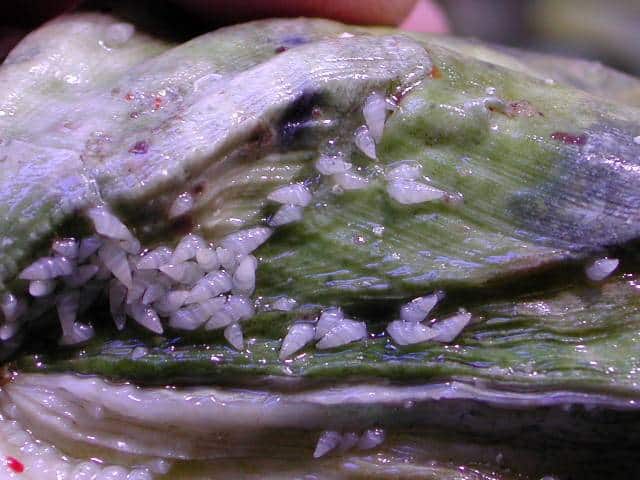
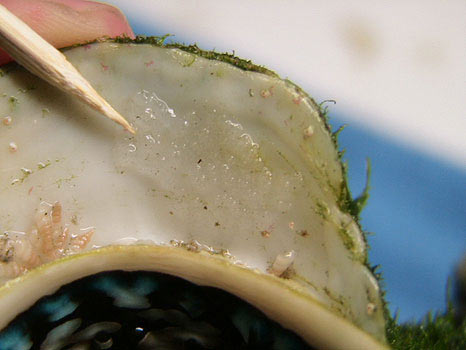
For more information on some of the common problems with Tridacna Clams you can read a great article in Reefkeeping Magazine from James W Fatherree M.Sc – CLICK HERE FOR ARTICLE
Clam Predators
They’re not too many creatures that will prey on your clam but there may be a few opportunists that you need to keep an eye on:
Some Crabs can overturn small clams to feed on the Byssal Gland before they have a chance to secure themselves.
Some of these crabs are:
Stone Crabs, Box Crabs & Shame-Faced Crabs
Some Shrimp can pick at the clam Mantle if an opportunity presents itself
Some of these shrimp are:
Mantis Shrimp, True Shrimp
Some Fish are also Mantle nippers if they feel like a snack. Not all are prone to this but you should keep an eye open for any signs of predation.
Some of these fish are:
Six-Line Wrasse – I have one and have never seen it nip, but I’ve heard of others devouring a prized clam overnight!
Triggers, Large Wrasses and Parrotfish can attack small clams.
Other fish that can be hit or miss are Tangs, Pygmy Angelfish, and Blennies, especially the Bicolor and Lawnmower species. Some aquarists have model citizens and others have had model citizens turn into clam munching machines months after the clam arrived. Be vigilant and keep an eye on your livestock around your clam.
To Finish
Clams are a beautiful addition to any reef aquarium and they are pretty easy to keep once you have the right lighting, flow and water parameters. I hope this article has helped answer and inform you ready for your trip to the store or your favorite online vendor.
I love my Deresa and Squamosa clams and they are getting fatter every month!
If you would like to check out some beautiful clams head over to UniqueCorals.com to see their latest stock and pricing.

